.
 |
Description |
Model Scales |
|
|
|
|
|
|
|
|
|
Locos |
|
|
 |
Cockerill type IV vertical boiler steam loco
(5ft 3in gauge version)
Built by Cockerill in Belgium. The type 4 was built from 1883 to 1949, and was a very successful shunting loco.
Some known to have operated in Ireland.
Requires wheels,chassis
|










|
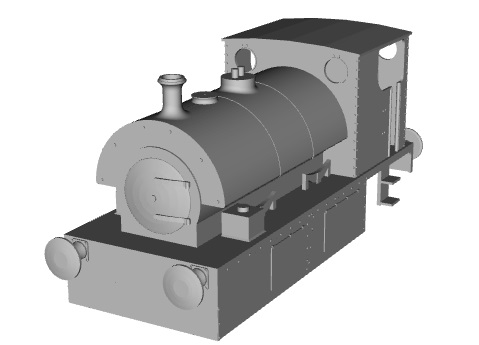
|
Guinness Brewery Hudswell Clarke steam loco
The Guinness brewery in Dublin had is own narrow gauge railway, and when it
expanded and required a mainline connection, converter wagons were used. In 1914the first broad gauge steam loco was supplied by Hudswell Clarke, and as the railway ran through streets, it had to have tramway type side covers.
Steam operated up till 1960s, and a Hudswell Clarke diesel was also supplied in 1949.
One of the steam locos is now preserved, but the diesel was scrapped.
Requires finishing off, wheels etc
|










|
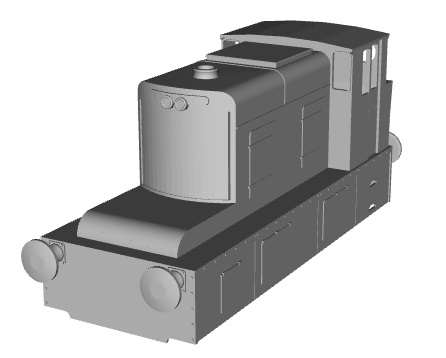
|
Guinness Brewery Hudswell Clarke diesel loco
The Guinness brewery in Dublin had is own narrow gauge railway, and when it
expanded and required a mainline connection, converter wagons were used. In 1914the first broad gauge steam loco was supplied by Hudswell Clarke, and as the railway ran through streets, it had to have tramway type side covers.
Steam operated up till 1960s, and a Hudswell Clarke diesel was also supplied in 1949.
Requires finishing off, wheels etc
|










|

|
Great Southern and Western Railway class 90 0-6-0T loco
Built for the Castleisland Railway in 1875 as an 0-6-4 with attached
carriage section. Originally numbered C, on becoming GSWR property in 1879,
it was renumbered 90.
In 1915 rebuilt as an 0-6-0T without carriage section, and in GSR days
allocated to Cork Albert Quay along with similar loco no 100.
Withdrawn in 1959, it is now preserved.
Requires finishing off, wheels and mechanism etc.
|










|
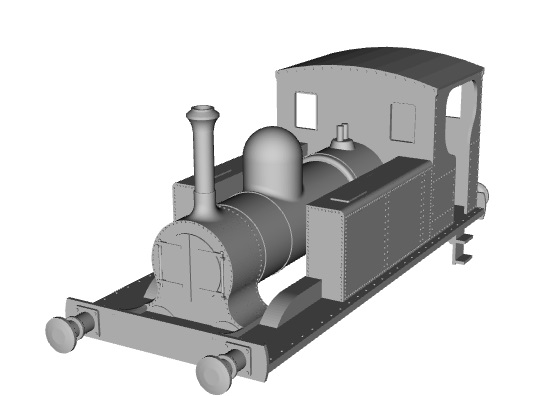
|
Great Southern and Western Railway
class 99 0-6-0T loco
No 90 was built for the Castleisland Railway in 1875 as
an 0-6-4 with attached carriage section. Originally numbered C, on becoming
GSWR property in 1879, it was renumbered 90.
In 1915 no 90 was rebuilt as an 0-6-0T without carriage
section, and in GSR days allocated to Cork Albert Quay along with similar
loco no 100.
Withdrawn in 1959, it is now preserved.
2 more locos were built without a carriage section in
1890-1 for use on the Fermoy to Mitchelstown branch. Numbered 99 and 100,
There were a few differences. No 99 was scrapped in 1930, but no 100
survived till 1959, working with no 90 at Cork.
Requires finishing off, wheels and mechanism etc.
Based on photo and period drawing , combined with scale
drawing of preserved loco
|










|
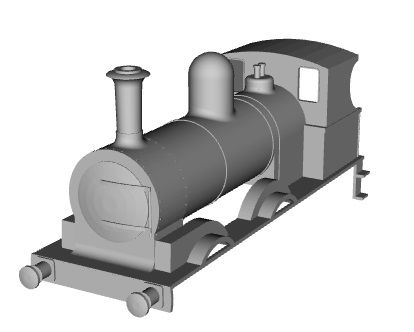
|
Great Southern and Western Railway class 101 (J15) 0-6-0 loco with saturated boiler fitted
one of the classic and most numerous class of locos found in Ireland.
Originally built by Beyer Peacock, to a typical BP design in 1860s, most were then built in Ireland up till 1903.
subsequent modifications saw them surviving till end of steam and two examples have been preserved, 184(with saturated boiler), and 1856(with type Z superheated boiler).
Requires finishing off, wheels and mechanism etc.
|










|
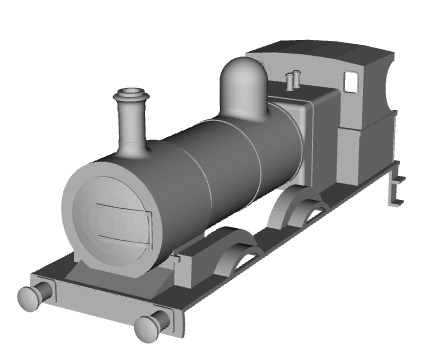
|
Great Southern and Western Railway
class 101 (J15) 0-6-0 loco with Z type boiler fitted
one of the classic and most numerous class of
locos found in Ireland.
Originally built by Beyer Peacock, to a typical BP
design in 1860s, most were then built in Ireland up till 1903.
subsequent modifications saw them surviving till end of
steam and two examples have been preserved, 184(with saturated boiler), and
1856(with type Z superheated boiler).
Requires finishing off, wheels and mechanism etc.
|










|

|
Great Southern and Western Railway class 101 (J15) 0-6-0 loco tender type A (narrow)
Earlier narrow tender for loco, with extended sides . As now on preserved loco number 184. Classifed as a type A tender under GSR.
Requires finishing off, wheels and mechanism etc.
|










|
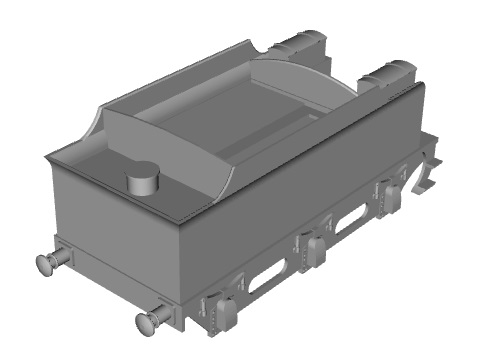
|
Great Southern and Western Railway loco type B tender
An enlarged version of the narrow bodies outside sprung type A tender. Sides full width but still on same length chassis. Originally intended for large locos but downgraded to smaller locos such as 101/J15 locos in later years.
Based on basic GSWR loco diagrams , and assumed other standard GSWR features from earlier tenders and photos.
Requires finishing off, wheels and mechanism etc.
|










|
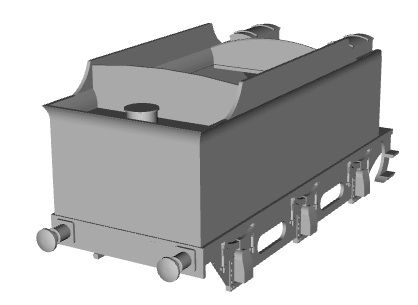
|
Great Southern and Western Railway
loco type C tender
An enlarged version of the type B tender. Sides
again full width now on lengthened chassis, but with same wheelbase.
Originally intended for large locos but downgraded to smaller locos such as
101/J15 locos in later years.
Based on basic GSWR loco diagrams , and assumed other
standard GSWR features from earlier tenders and photos.
Requires finishing off, wheels and mechanism etc.
|










|
|
Railcars |
|
|
 |
Great Southern and Western Railway class 90 0-6-4 loco with carriage section
Built for the Castleisland Railway in 1875 as an 0-6-4 with attached carriage section. Originally numbered C, on becoming GSWR property in 1879, it was renumbered 90.
In 1915 rebuilt as an 0-6-0T without carriage section, and in GSR days allocated to Cork Albert Quay along with similar loco no 100.
Withdrawn in 1959, it is now preserved.
Requires finishing off, wheels and mechanism etc.
Based on photo and period drawing , combined with scale drawing of preserved loco
|










|
 |
Great Southern and Western Railway class 90 0-6-4 loco no 91 with carriage section
No 90 was built for the Castleisland Railway in 1875 as an 0-6-4 with attached carriage section. Originally numbered C, on becoming GSWR property in 1879, it was renumbered 90.
In 1915 no 90 was rebuilt as an 0-6-0T without carriage section, and in GSR days allocated to Cork Albert Quay along with similar loco no 100.
Withdrawn in 1959, it is now preserved.
No 91 was built in 1881, similar to no 90, but with some differences to carriage section(originally believed to have been planned to have a van rather than carriage
section). Thought to have been a spare for no 90 on Castleisland Railway. Rebuilt as an 0-6-0ST in 1924, and scrapped in 1930.
Requires finishing off, wheels and mechanism etc.
Based on photo and period drawing , combined with scale drawing of preserved loco
|










|
 |
Great Southern and Western Railway class 90 0-6-4 loco no 92 with carriage section
No 90 was built for the Castleisland Railway in 1875 as an 0-6-4 with attached carriage section. Originally numbered C, on becoming GSWR property in 1879, it was renumbered 90.
In 1915 no 90 was rebuilt as an 0-6-0T without carriage section, and in GSR days allocated to Cork Albert Quay along with similar loco no 100.
Withdrawn in 1959, it is now preserved.
No 92 was built in 1881, similar to no 90, but with a saloon style coach section. It was used to transport staff from Kingsbridge to the works and always retained its coach section, being scrapped in 1945.
No 91 was built in 1881, similar to no 90, but with some differences to carriage section(originally believed to have been planned to have a van rather than carriage secion). Thought to have been a spare for no 90 on Castleisland Railway. Rebuilt as an 0-6-0ST in 1924, and scrapped in 1930.
Requires finishing off, wheels and mechanism etc.
Based on photo and period drawing , combined with scale drawing of preserved loco
|










|
 |
SLNCR Railcar B
The SLNCR was a small standard gauge(Irish 5ft 3in) line linking Enniskillen on the Great Northern system with Sligo on the Midland Great Western system, later to become part of the Great Southern Railway and finally CIE.
Railcar 'B' was supplied by Walkers of Wigan in 1947,powered by a 102hp Gardner diesel engine mounted on a four-wheeled power bogie .The power bogie was of the four coupled wheel arrangement with outside rods. It was articulated to the main passenger coach, which was carried on a plain bogie.
When the GNR closed in 1957, Railcar 'B' was bought by CIE and became railcar 2509. It was finally withdrawn in 1971 .
Railcar 'B's SLNCR colour scheme was the two-tone green scheme . When in service with CIE it carried that operator's green livery up until 1962 and after that date the black and orange livery.
Requires finishing off, wheels and mechanism etc.
|










|
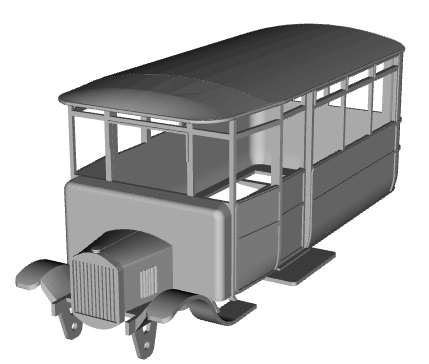
|
Irish Ford railcar
(Derwent Valley Railway type)
Ford chassis with body built by C.H.Roe of Crossgates (Leeds). Operated 1924-1926 when road bus competition saw them sold to County Donegal Railways.
They were modified by County Donegal(body lowered), to fit 3ft gauge, but were not
successful and were scrapped in the mid 30s.
Colonel Stephens wanted to buy them, but was outbid by the County Donegal.
The design would have be useful on Irish 5ft 3in gauge, as some earlier Ford types were used.
Requires chassis,and finishing etc.
|










|

|
Dublin and Blessington Tramway Drewry railcar
The Dublin and Blessington Tramway ran from 1888 till 1932, mainly using steam engines but started to use internal combustion in its final years. This railcar was supplied by
Drewry, and on closure was ought by the County Donegal Railway and converted from 5ft 3in gauge to 3ft gauge, and continued in use until the line closed, having been converted to a trailer coach in the 1940s. It has been preserved in this final condition.
Requires finishing off, wheels and mechanism etc.
|










|
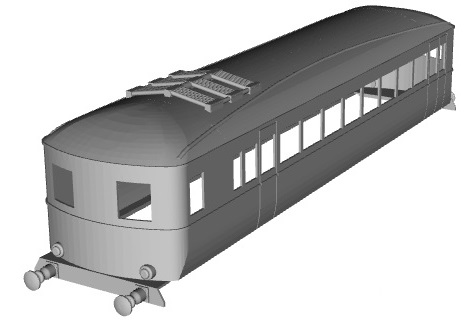
|
Great Northern Railway (Ireland) railcar B
Introduced along with railcar A in 1931-2. railcar A was more successful, and railcar B was de-motored in 1946 and used as a coach(no 500) until being scrapped in 1949.
Requires finishing off, wheels and mechanism etc.
|










|
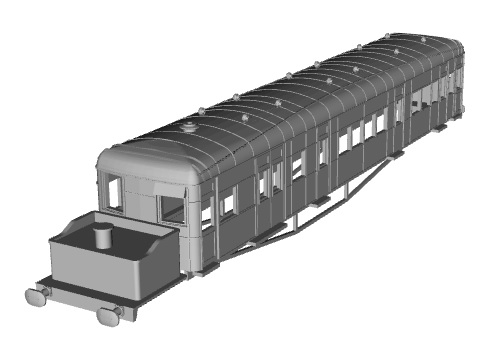
|
GSR Clayton steam railcar
Following the LNER the GSR bought 6 steam railcars built by Clayton in 1928. Unfortunately as with the LNER ones they were not successful and were withdrawn in 1932. The loco portions were scrapped and the coaches put into pairs to create articulated coaches , and in this form continued in service till 1955.
Steam railcar ,nos 358 - 361
Requires finishing off, wheels and mechanism etc.
|










|
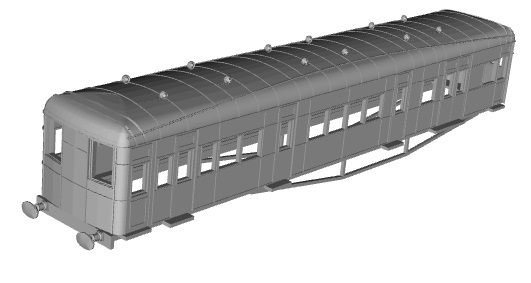
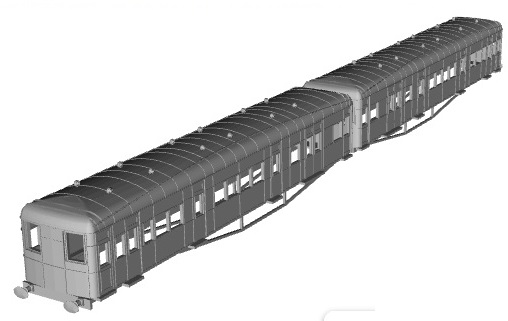
|
GSR Clayton steam railcar converted to articulated coaches
Following the LNER the GSR bought 6 steam railcars built by Clayton in 1928. Unfortunately as with the LNER ones they were not successful and were withdrawn in 1932. The loco portions were scrapped and the coaches put into pairs to create articulated coaches , and in this form continued in service till 1955.
Coach only,359 and 358 paired
Requires finishing off, wheels and mechanism etc.
|










|
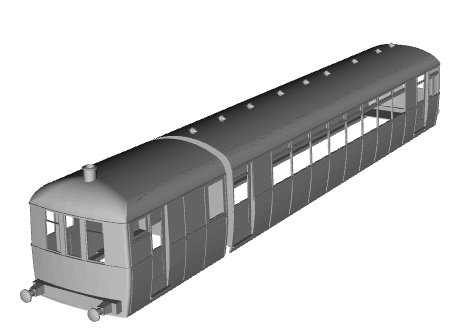
|
GSR Sentinel steam railcar
Introduced in 1927. Similar design to production articulated version used on the LNER.
withdrawn 1941-2
Requires finishing off, wheels and mechanism etc.
|










|
GSR Drumm battery railcar A-B set

The Drumm Battery Train was a battery electric multiple unit developed in the 1930s which ran successfully in service on the Dublin to Bray route. The train's batteries were charged via an overhead pickup at the turnaround station.
The train was a successful implementation of the battery developed by Dr James J.
Drumm.
Unit A was constructed at Inchicore railway works in 1931 shortly followed by unit B.
Units C and D were constructed in 1938.
Units A and B were in service from 1932 to 1949, being joined by units C and
D in 1939, though the later units were not as successful as hoped. The Drumm
Battery Trains were especially useful in the coal shortages of the early
1940s however were restricted by electricity supply shortages of 1949.
The units were withdrawn in 1949 due to the batteries becoming life expired
and cheaper alternatives available. Their batteries and electrical equipment
were removed and they continued in service as ordinary hauled carriages
until 1955. They were stored on a siding at Foxrock until being
scrapped.
Requires finishing off, wheels and mechanism etc.
|










|
|
Coaches |
|
|
 |
MGWR 4 wheel 3rd class coach
one of the typical 4 wheel coaches that were built to run on the MGWR . Most were replaced by 6 wheel coaches and were wihdrawn by the end of the 19th century. Some carried on on in other uses .
Requires finishing off, wheels etc.
|










|
 |
MGWR 6 wheel coach
Brake 3rd coach
one of the typical 6 wheel coaches that were built to run on the MGWR . Many continued in use up to till 1950s.
Requires finishing off, wheels etc.
|










|
 |
MGWR 6 wheel coach
3rd class coach
one of the typical 6 wheel coaches that were built to run on the MGWR . Many continued in use up to till 1950s.
Requires finishing off, wheels etc.
|










|
 |
MGWR 6 wheel coach
Lav 1st coach
one of the typical 6 wheel coaches that were built to run on the MGWR . Many continued in use up to till 1950s.
Requires finishing off, wheels etc.
|










|
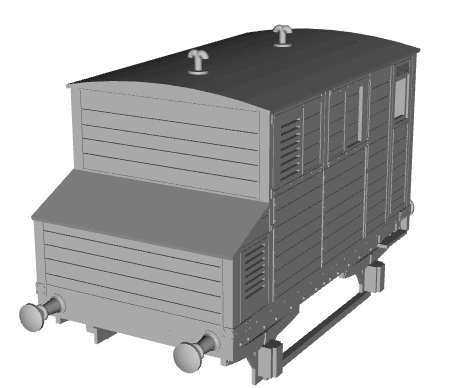
|
MGWR horsebox
one of the typical 4 wheel horseboxes that were built to run on the MGWR. This version introduced in 1889 .
Requires finishing off, wheels etc.
|










|
|
Wagons |
|
|
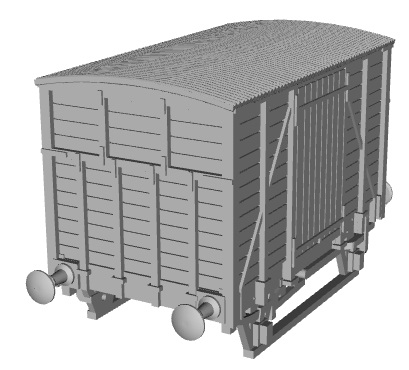
|
DWWR Ashbury 13ft 6in covered wagon/van
Introduced in 1902 by the DWWR(became the Dublin and South Eastern Railway in 1906).
Typical Irish wagon of the period.
Requires finishing off, wheels etc.
|










|


